Welcome to The Grinder’s Manual‚ your ultimate guide to mastering both coffee and poker. This comprehensive resource bridges the gap between manual coffee grinding and strategic poker play‚ offering practical advice for enthusiasts of both. Whether refining your brew or perfecting your poker face‚ this manual provides insights to elevate your skills and enhance your hobbies.
Overview of The Grinder’s Manual
The Grinder’s Manual is a comprehensive guide designed for enthusiasts seeking to master both manual coffee grinding and strategic poker play. It serves as a dual-purpose resource‚ offering insights into refining coffee brewing techniques and improving poker strategies. The manual emphasizes the importance of consistency and precision‚ whether grinding coffee beans or making calculated bets. For coffee lovers‚ it explores grind size optimization‚ maintenance tips‚ and achieving the perfect brew. For poker players‚ it delves into advanced concepts like continuation betting‚ check-raising‚ and adapting strategies across different scenarios. By combining these two seemingly unrelated hobbies‚ the manual highlights the mental discipline and focus required to excel in both. It encourages continuous improvement and provides practical advice for enhancing skills in a fun and engaging way. Whether you’re a coffee connoisseur or a poker enthusiast‚ this manual offers a unique perspective on refining your craft.
Importance of Manual Grinders in Coffee and Poker
Manual grinders play a pivotal role in both coffee preparation and poker strategy‚ as highlighted in The Grinder’s Manual. In coffee‚ manual grinders offer superior control over grind size and consistency‚ essential for extracting the perfect brew. They eliminate heat production‚ preserving coffee’s delicate flavors. For poker‚ the term “grinder” refers to players who consistently make small profits through disciplined‚ methodical play. These players emphasize patience‚ strategic planning‚ and minimizing risks. Both hobbies require a similar mindset: attention to detail‚ patience‚ and a commitment to mastering fundamentals. The manual draws parallels between the precision needed for grinding coffee and the strategic decisions in poker‚ illustrating how these skills can complement each other. By mastering manual grinding in coffee and adopting a grinder’s mindset in poker‚ enthusiasts can achieve excellence in both areas‚ fostering a deeper appreciation for the nuances of each craft.
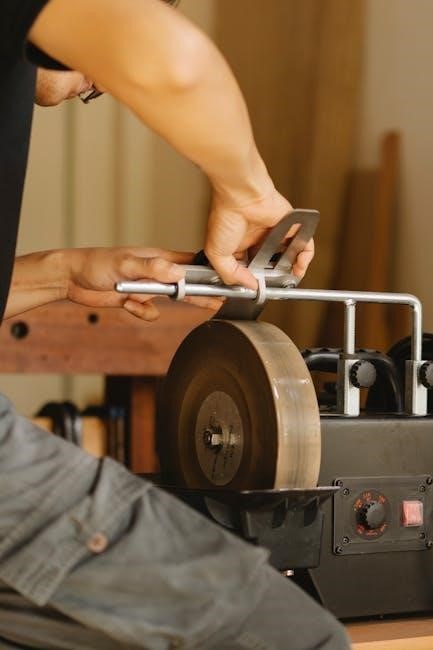
Understanding Manual Coffee Grinders
Manual coffee grinders offer precise control over grind size and consistency‚ crucial for optimal brewing. They ensure uniform particle distribution without generating heat‚ preserving coffee’s flavor. Portable and noise-free‚ they are ideal for coffee enthusiasts seeking high-quality results.
Benefits of Using a Manual Coffee Grinder
Manual coffee grinders provide numerous advantages for coffee enthusiasts. They allow for precise control over grind size‚ ensuring consistency and customization for various brewing methods. Unlike electric grinders‚ manual grinders produce no heat‚ preserving the delicate flavors and aromas of the coffee beans. Additionally‚ they are eco-friendly‚ as they eliminate the need for electricity and reduce waste. The cost-effectiveness of manual grinders is another significant benefit‚ as they are often more affordable than high-quality electric grinders. Furthermore‚ manual grinding can be a meditative process‚ connecting you more deeply with your coffee. Many users also appreciate the durability and low maintenance of manual grinders‚ making them a sustainable and long-lasting investment for coffee lovers. Overall‚ manual coffee grinders offer a perfect blend of functionality‚ flavor preservation‚ and environmental consciousness.
How to Choose the Right Manual Coffee Grinder
Selecting the appropriate manual coffee grinder involves considering several key factors to ensure it meets your needs and preferences. First‚ assess the size of the grinder based on how much coffee you typically brew. A smaller grinder is suitable for single servings‚ while a larger one accommodates multiple cups. Next‚ evaluate the material and construction‚ as durability varies between plastic‚ metal‚ and glass components. The ability to adjust grind size is crucial‚ as different brewing methods require different textures. Opt for a grinder with an easy-to-use adjustment mechanism. Consider the ease of turning the handle‚ especially for finer grinds‚ and the effort required. Additionally‚ think about how simple it is to clean the grinder‚ as this affects maintenance. Research brand reputation and read reviews to ensure quality. Set a budget and balance it with the features you need. Aesthetics and portability are also worth considering if you value design or travel frequently. Finally‚ look for any additional features that enhance functionality‚ such as interchangeable grinding surfaces or accessories. By weighing these elements‚ you can find a manual grinder that aligns with your lifestyle and coffee preferences.
Best Practices for Grinding Coffee Manually
Mastering manual coffee grinding requires attention to detail and consistency. Always start with freshly roasted and whole coffee beans for optimal flavor. Before grinding‚ ensure the grinder is clean to avoid residual coffee oils or dust. Adjust the grind size according to your brewing method—finer for espresso‚ medium for pour-over‚ and coarser for French press. Use a consistent number of beans to maintain balance in your brew. To achieve even grinding‚ stabilize the grinder firmly on a flat surface or use a vice if available. Apply steady‚ rhythmic pressure while turning the handle to avoid uneven particle distribution. For finer grinds‚ grind in short pulses and check progress frequently. Store any unused ground coffee in an airtight container to preserve freshness. Lastly‚ practice regularly to develop a feel for the grind size and texture. By following these best practices‚ you can elevate your manual grinding skills and enjoy a more satisfying coffee experience.
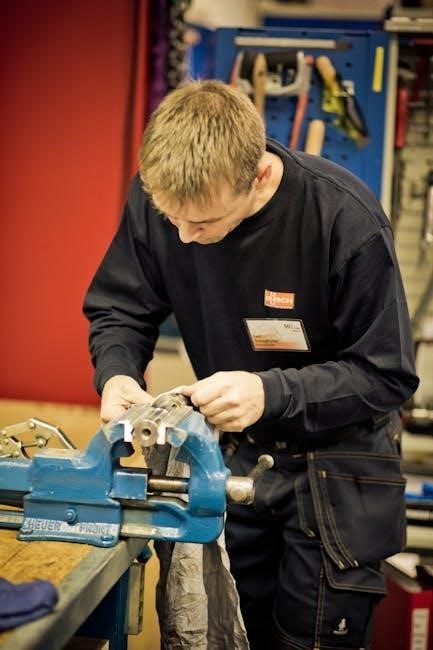
Mastering Poker Strategies from The Grinder’s Manual
Mastering poker strategies from The Grinder’s Manual involves understanding opponents‚ adapting tactics‚ and maintaining mental discipline. This guide provides insights into improving decision-making and refining gameplay for consistent success.
The Grinder’s Manual for Poker is a comprehensive guide designed to help players elevate their skills and embrace a strategic mindset. Tailored for both newcomers and experienced players‚ this manual delves into the fundamentals of poker‚ offering insights into decision-making‚ hand analysis‚ and psychological tactics. It emphasizes the importance of patience‚ observation‚ and adaptability‚ which are crucial for long-term success in the game. The manual also explores advanced concepts like reads‚ table dynamics‚ and bankroll management‚ providing practical advice to improve consistency. By focusing on mental discipline and emotional control‚ The Grinder’s Manual prepares players to navigate high-pressure situations with confidence. Whether you’re aiming to dominate casual games or compete at higher stakes‚ this guide serves as a valuable resource to refine your approach and achieve your poker goals.
Key Concepts for Improving Your Poker Game
Mastering poker requires a deep understanding of fundamental strategies and psychological insights. One of the most critical concepts is position‚ as it dictates the order of play and the information available to you. Players in later positions have a strategic advantage‚ allowing them to make more informed decisions. Another key concept is hand selection‚ where selectively playing strong starting hands minimizes losses and maximizes potential gains. Understanding opponent tendencies is equally vital‚ as identifying patterns in their play can help you exploit their weaknesses. Additionally‚ bankroll management ensures sustainability‚ preventing financial strain even during downswings. Lastly‚ continuous learning is essential‚ as adapting to evolving strategies and opponent styles keeps you competitive. By focusing on these core principles‚ players can build a solid foundation for long-term success in poker.
Understanding C-Betting Strategies
C-betting‚ short for “continuation betting‚” is a cornerstone strategy in poker where a player who raised preflop continuation bets on the flop. This tactic aims to build the pot with a strong hand or disguise a weaker one. Key to c-betting is assessing the flop texture and opponent reactions. Timing and table image play crucial roles‚ as frequent c-bets may signal strength or bluffing. Players should c-bet when they have a strong hand like top pair or a draw‚ or to narrow the field against tight opponents. However‚ overusing this strategy can make it predictable‚ so balancing c-bets with checks is essential. Effective c-betting requires adaptability and reading opponents’ tendencies‚ such as their folding ranges and aggression levels. Mastering this skill enhances your ability to control the pot and manipulate opponents’ decisions‚ making it a vital tool for any serious poker player aiming to improve their edge at the table.
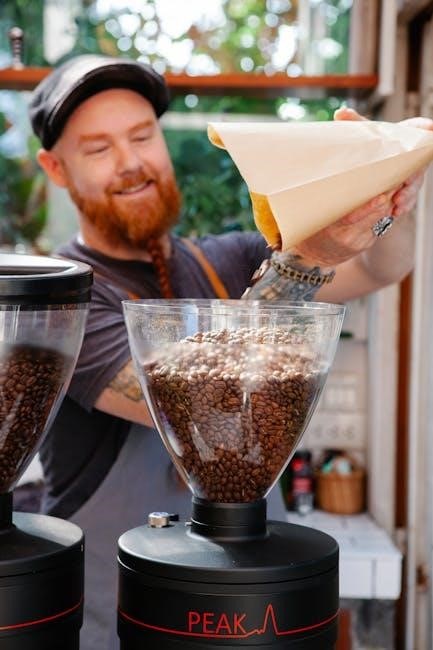
Continuation Betting in Different Scenarios
Continuation betting (c-betting) is a versatile strategy that must be adapted to different scenarios at the poker table. In heads-up pots‚ c-betting is more effective due to reduced competition‚ allowing players to build pots with strong hands or bluff effectively. Conversely‚ in multiway pots‚ c-betting becomes riskier‚ as opponents are more likely to have strong hands. When facing tight players‚ c-betting can be used to exploit their folding tendencies‚ while against aggressive opponents‚ it’s crucial to balance c-bets with checks to avoid becoming predictable.
Flop texture also plays a significant role. On draw-heavy boards‚ c-betting can induce folds from weaker hands‚ but be cautious of opponents holding strong draws. On static boards‚ c-betting is less risky and can help disguise hand strength. Timing is also critical; barreling on the turn after a successful c-bet can maximize value‚ but overdoing it can backfire. Adjusting c-betting strategies based on table dynamics and opponent behavior is essential to maintaining an edge in various situations.
Check-Raising and Its Impact on the Game
Check-raising is a powerful poker tactic that can significantly influence the dynamics of a hand. By checking with a strong hand and then raising after an opponent bets‚ players can build the pot and maximize value. This move is particularly effective in disguising hand strength‚ as it creates uncertainty for opponents. Check-raising can also be used to induce bluffs or force opponents into tough decisions‚ thereby increasing the psychological pressure on them.
However‚ check-raising must be executed carefully to avoid becoming predictable. Overusing this tactic can make opponents cautious‚ reducing its effectiveness. Additionally‚ check-raising is more impactful in certain scenarios‚ such as when holding a strong hand in late position or against aggressive players. When timed correctly‚ it can elevate your game‚ but misuse can lead to unnecessary risks. Balancing check-raising with other strategies ensures it remains a valuable tool in your arsenal.
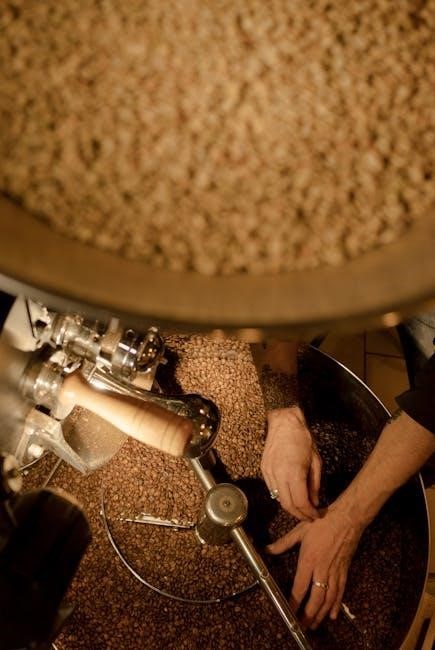
Advanced Techniques for Coffee Enthusiasts
Mastering advanced grinding techniques involves precision‚ consistency‚ and experimentation. Explore optimal grind sizes for various brewing methods‚ such as fine grinds for espresso and coarser grinds for French press. Perfecting your grind ensures a balanced flavor and aroma‚ elevating your coffee experience to new heights.
Optimizing Grind Size for Different Brewing Methods
Optimizing grind size is crucial for achieving the perfect cup of coffee‚ as it directly impacts extraction rates and flavor. For espresso‚ a fine grind is essential to ensure proper pressure and extraction during the brewing process. Drip coffee‚ on the other hand‚ requires a medium grind to allow for even water flow through the filter. French press demands a coarse grind to prevent over-extraction and ensure a smooth‚ rich flavor. Pour-over methods‚ like Chemex or V60‚ also benefit from a medium-coarse grind to balance extraction time and flavor release. Aeropress requires a slightly finer grind than pour-over to achieve optimal pressure and extraction. By adjusting the grind size according to the brewing method‚ coffee enthusiasts can unlock the full potential of their beans and enjoy a more refined coffee experience. Understanding these nuances is a key step in mastering manual grinding techniques.
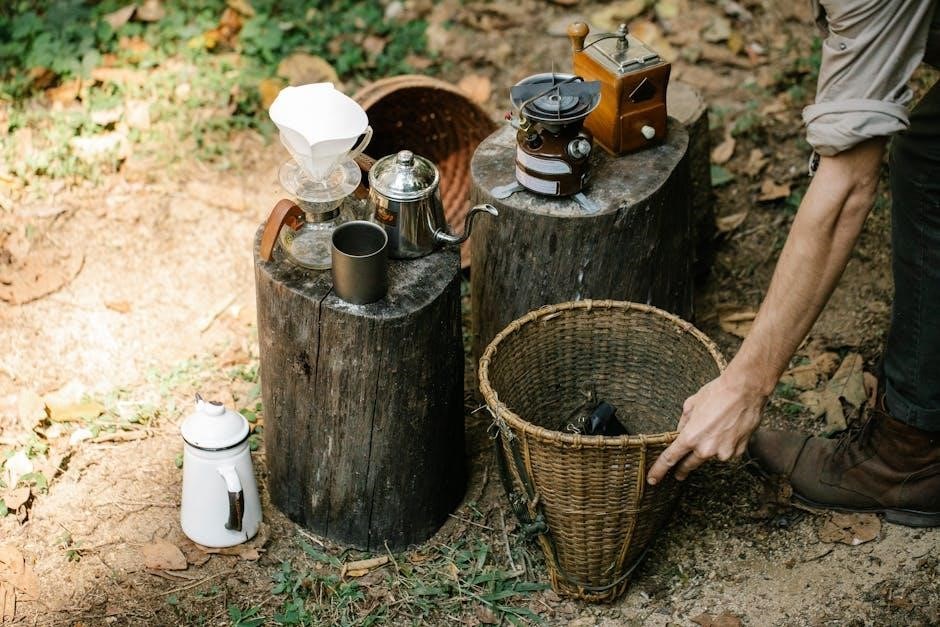
Maintaining Consistency in Manual Grinding
Maintaining consistency in manual grinding is essential for achieving a perfect cup of coffee. The key lies in understanding the factors that influence grind uniformity. First‚ ensure your grinder is clean and free from residual coffee particles‚ as these can interfere with the consistency of your grind. Regularly cleaning the burrs and chambers prevents old coffee oils from affecting the flavor. Calibration is another critical aspect; misaligned or worn-out burrs can lead to uneven grinding. Always use freshly roasted beans‚ as older beans may not grind as uniformly due to moisture loss. Additionally‚ maintain a consistent bean feed rate while grinding to avoid overloading the burrs‚ which can cause inconsistent particle sizes. Finally‚ store your beans in a cool‚ dry place to prevent humidity from altering their texture and grindability. By adhering to these practices‚ you can ensure consistent results every time you grind.
Tips for Achieving the Perfect Grind
Achieving the perfect grind requires precision‚ patience‚ and practice. Start by investing in a high-quality manual grinder with adjustable settings to suit your brewing method. Blade grinders are less ideal‚ as they generate heat and can lead to inconsistent grinds. Always use freshly roasted beans‚ as stale coffee loses its flavor profile. Store beans in an airtight container in a cool‚ dark place to preserve freshness. For optimal results‚ grind immediately before brewing. Pay attention to the grind size—finer for espresso‚ medium for pour-over‚ and coarser for French press. Calibrate your grinder regularly to ensure consistency. Listen to the sound of the grinder; a smooth‚ even noise indicates uniform particles. For manual grinders‚ pulse-grind in short bursts to avoid overheating the beans. Clean the grinder after each use to prevent residue buildup. Experiment with small adjustments to refine your grind‚ and remember‚ practice makes perfect. Perfecting your grind is the first step to a truly exceptional cup of coffee.
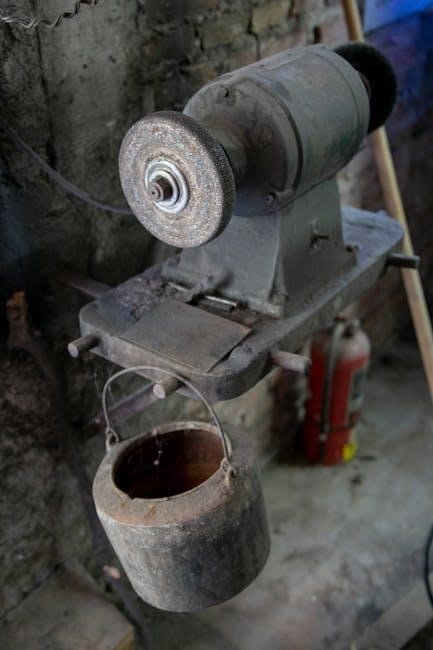
Combining Coffee and Poker: A Grinder’s Perspective
Coffee and poker share a common thread—patience‚ focus‚ and a meticulous process. Both require dedication to detail‚ whether dialing in the perfect grind or calculating the next move. The satisfaction lies in mastering the craft‚ balancing art and strategy‚ and enjoying the journey as much as the outcome.
The Mental Discipline Required for Both
Mental discipline is a cornerstone of both coffee grinding and poker‚ requiring focus‚ patience‚ and consistency. In coffee‚ precision is key—measuring beans‚ adjusting grind sizes‚ and timing brews. Similarly‚ poker demands emotional control‚ calculated decisions‚ and the ability to stay composed under pressure. Both pursuits teach mindfulness‚ as distractions can lead to subpar results. For coffee‚ this means maintaining attention during the grinding process‚ while in poker‚ it involves staying observant of opponents’ behaviors. The ability to adapt is also crucial; in coffee‚ adapting to bean origin or roast levels‚ and in poker‚ adjusting strategies based on table dynamics. Both activities train the mind to stay disciplined‚ fostering resilience and a long-term perspective. Over time‚ this mental rigor enhances not only the quality of coffee and poker play but also the overall enjoyment of the process.
How Coffee Can Enhance Your Poker Focus
Coffee is renowned for its ability to sharpen mental clarity and boost focus‚ making it a natural ally for poker players. The caffeine in coffee blocks adenosine receptors in the brain‚ reducing drowsiness and increasing alertness. This heightened state of awareness allows players to stay attuned to the game‚ track opponents’ actions‚ and make quicker‚ more precise decisions. Additionally‚ coffee stimulates dopamine production‚ enhancing motivation and reducing the likelihood of tilt—a common pitfall in poker. The ritual of grinding and brewing coffee also serves as a mental preparation tool‚ fostering a sense of consistency and routine that can translate to the poker table. By combining the physical act of grinding with the cognitive benefits of caffeine‚ coffee becomes more than just a beverage; it’s a strategic advantage. For grinders‚ this synergy between coffee and poker creates a mental edge‚ helping them stay focused and composed under pressure.
Time Management for Both Hobbies
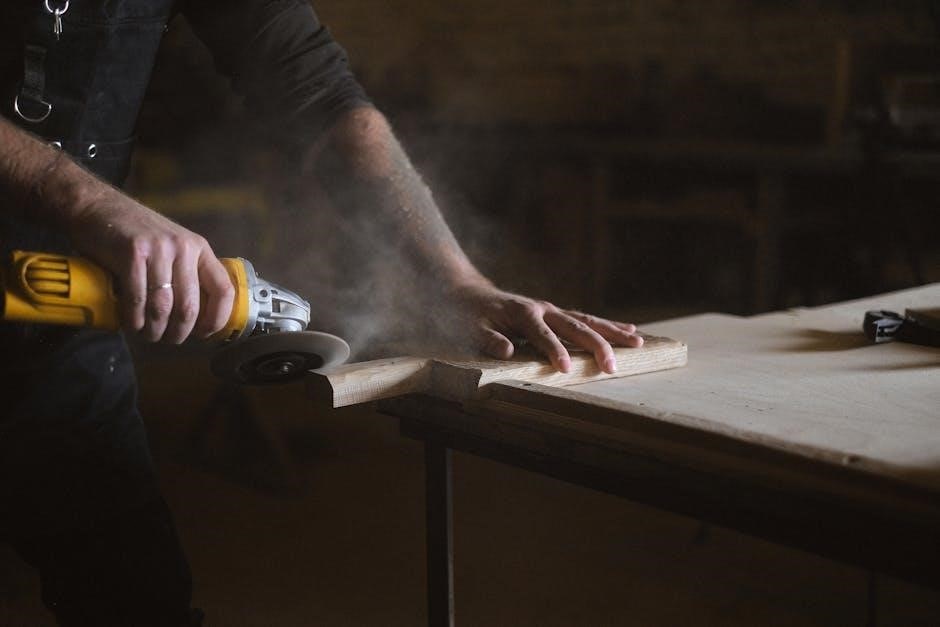
Mastering time management is essential for balancing the demands of both coffee grinding and poker. For coffee enthusiasts‚ allocating specific intervals for grinding‚ brewing‚ and tasting ensures a consistent routine. Similarly‚ poker players must manage their time effectively during games‚ balancing decision-making with the pace of the table. Setting clear priorities and creating a schedule can help integrate both hobbies seamlessly. For instance‚ dedicating mornings to coffee preparation and afternoons to poker practice allows for focused attention on each activity. Additionally‚ incorporating time-blocking techniques can prevent one hobby from overshadowing the other. By maintaining a structured approach‚ grinders can optimize their productivity and enjoyment in both areas. This discipline not only enhances performance but also fosters a sense of accomplishment and balance in their pursuits; Effective time management is a cornerstone of success for those who embrace both coffee and poker as integral parts of their lifestyle.
Summarizing Key Takeaways
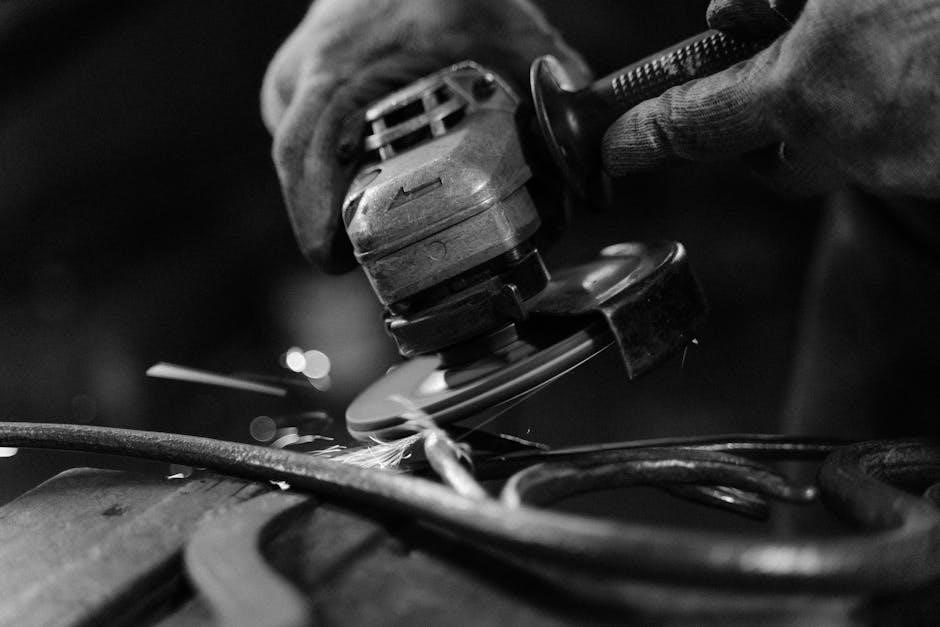
The Grinder’s Manual provides a unique blend of insights into coffee grinding and poker strategies‚ offering practical advice for enthusiasts of both. For coffee lovers‚ manual grinders are highlighted as essential tools for achieving optimal flavor‚ with tips on selecting the right grinder and maintaining consistency in grind size. Poker players will find value in the discussion of advanced techniques like continuation betting and check-raising‚ which can elevate their game. The manual emphasizes the importance of mental discipline and focus in both hobbies‚ suggesting that coffee can even enhance concentration during poker sessions; Time management is another crucial aspect‚ allowing grinders to balance their passions effectively. Overall‚ the guide encourages continuous improvement‚ whether refining coffee brewing methods or perfecting poker strategies. By embracing these principles‚ readers can become proficient in both areas and enjoy the rewarding journey of mastering their crafts.
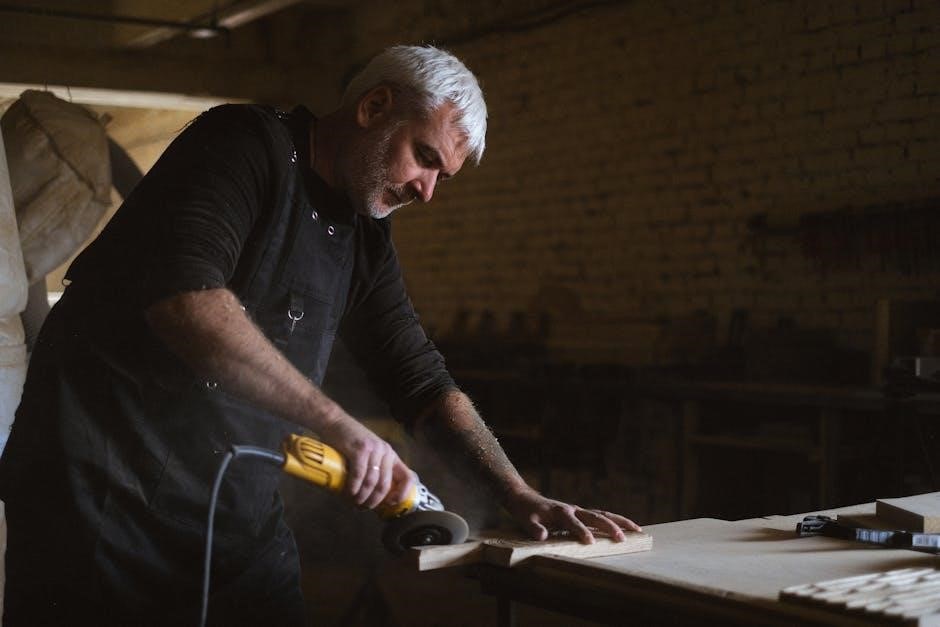
Encouragement for Continuous Improvement
Embracing the mindset of a grinder means committing to lifelong learning and refinement in both coffee and poker. Continuous improvement is essential for mastering these crafts‚ as small adjustments can lead to significant enhancements over time. Coffee enthusiasts are encouraged to experiment with different beans‚ roast levels‚ and brewing techniques to refine their palate and grinding skills. Similarly‚ poker players should regularly review their strategies‚ study new concepts‚ and adapt to evolving game dynamics. Both hobbies require patience and persistence‚ as mastery is rarely achieved overnight. By setting achievable goals and dedicating time to practice‚ grinders can steadily improve their skills. Celebrating progress‚ no matter how small‚ fosters motivation and keeps the journey enjoyable. Remember‚ the pursuit of excellence is a lifelong path‚ and every step forward brings you closer to becoming a true master of your craft.
Final Tips for Becoming a Better Grinder
To excel as a grinder‚ whether in coffee or poker‚ consistency and patience are key. Practice regularly to refine your skills‚ as both crafts demand dedication and attention to detail. Invest in quality tools‚ such as a precise grinder for coffee or reliable software for poker analysis‚ to enhance your performance. Stay observant and adaptable‚ as both hobbies require adjusting to new situations. For coffee‚ experiment with different roasts and brewing methods to expand your knowledge. In poker‚ study your opponents and refine your strategies based on their behavior. Balance passion with discipline to avoid burnout. Surround yourself with a community of like-minded individuals to share insights and stay motivated. Remember‚ growth comes from learning and applying new techniques. By embracing these principles‚ you’ll continue to improve and enjoy the journey of becoming a better grinder in both coffee and poker.


